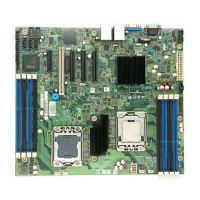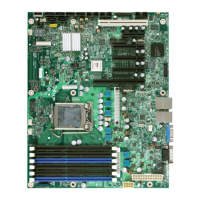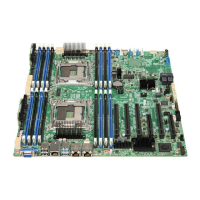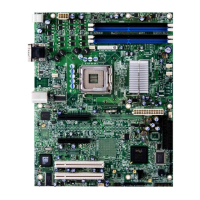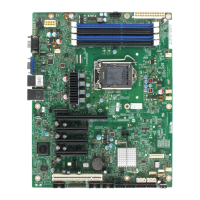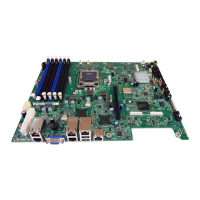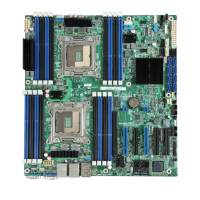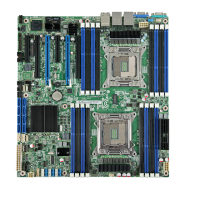Functional Architecture Intel® Server Boards S5520HC, S5500HCV, and S5520HCT TPS
Revision 1.8
Intel order number E39529-013
54
Main Advanced Security Server Management Boot Options Boot Manager
Administrator Password Status <Installed/Not Installed>
User Password Status <Installed/Not Installed>
Set Administrator Password [1234aBcD]
Set User Password [1234aBcD]
Front Panel Lockout Enabled/Disabled
TPM State
<Enabled & Activated/Enabled & Deactivated/Disabled &
Activated/Disabled & Deactivated>
TPM Administrative Control No Operation/Turn On/Turn Off/Clear Ownership
Figure 21. Setup Utility – TPM Configuration Screen
Table 16. TPM Setup Utility – Security Configuration Screen Fields
Setup Item Options Help Text Comments
TPM State* Enabled and Activated
Enabled and Deactivated
Disabled and Activated
Disabled and Deactivated
Information only.
Shows the current TPM device state.
A disabled TPM device will not
execute commands that use TPM
functions and TPM security
operations will not be available.
An enabled and deactivated TPM is
in the same state as a disabled TPM
except setting of TPM ownership is
allowed if not present already.
An enabled and activated TPM
executes all commands that use
TPM functions and TPM security
operations will be available.
TPM
Administrative
Control**
No Operation
Turn On
Turn Off
Clear Ownership
[No Operation] - No changes to current
state.
[Turn On] - Enables and activates TPM.
[Turn Off] - Disables and deactivates TPM.
[Clear Ownership] - Removes the TPM
ownership authentication and returns the
TPM to a factory default state.
Note: The BIOS setting returns to [No
Operation] on every boot cycle by default.
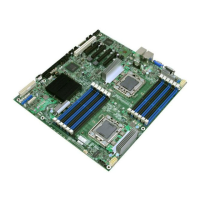
